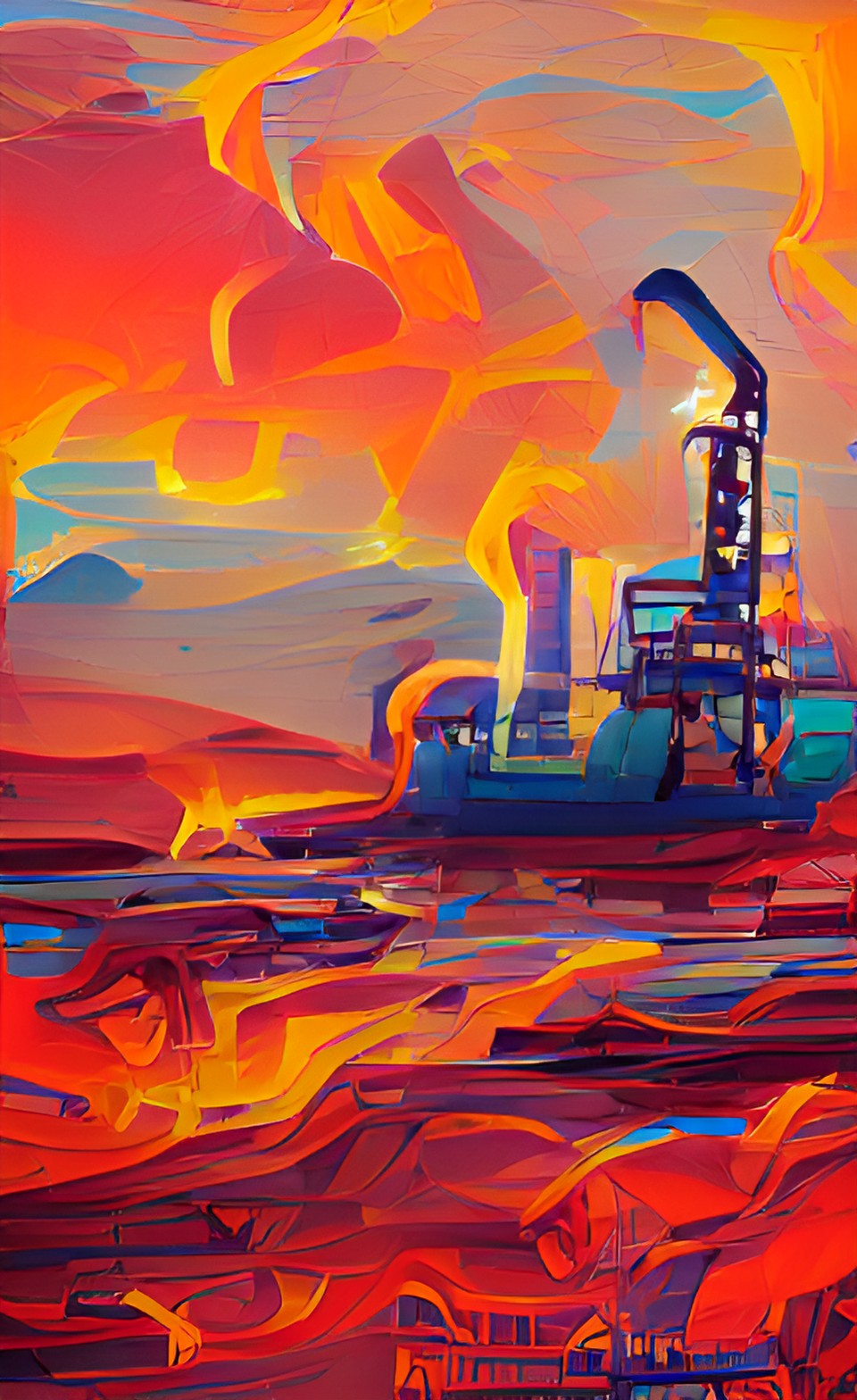- Air Homepage
- Air Quality Testing
- Output So2
- Flare Stack Oil and Gas
Flare Stack oil and gas - Air Quality Modelling with AERFlare Expertise
Flare stacks are essential to safe oil and gas operations, but regulations trigger flare stack oil and gas obligations. In Alberta, Directive 60 requires operators to demonstrate compliance through air quality and safety assessments, modelled using the Alberta Energy Regulator’s approved tool, AERFlare.
Flare Stack Modelling for Directive 60: AERFlare Unleashed - Does your industrial flare stack's air quality model meet Directive 60's SO2 and H2S limits? AERFlare software lets you generate regulator-trusted results that protect your community and ensure fast approvals.
This modelling evaluates flare stack oil and gas (mostly gas) emissions, dispersion patterns, within and outside Emergency Planning Zones (EPZs) to confirm that controls on flaring activities protect communities and the environment. If you're preparing applications, permits, or compliance reports, getting the modelling right is critical.
This guide explains the process at a high level. Keep in mind, partnering with experienced professionals leads to results that regulators will trust.
 Flares, flares and more flares
Flares, flares and more flaresAn Introduction
AERflare is a key tool to ensure your flaring or incineration operations meet strict air quality standards if you have to do air dispersion modeling under Alberta Energy Regulator (AER) Directive 60 or similar regulations in Saskatchewan, Manitoba, or British Columbia. Here's an overview of AERflare's purpose, setup, and complexity. It shows why compliance requires professional expertise.
 A hot flare in a cold climate
A hot flare in a cold climateWhat is AERflare?
AERflare predicts how gases spread in the air from flares (open flames) and incinerators (enclosed burners). Flare characteristics are converted into pseudo-parameters to work with AERMOD, a U.S. Environmental Protection Agency air dispersion model. Non-routine flaring during well testing, maintenance, or emergencies must comply with Alberta's Directive 60, which is intended to keep concentrations associated with emissions below our limits. For example, 450 µg/m3 for SO2.
Here's what AERflare helps us do:
- Regulatory approvals with detailed inputs in permit mode.
- Testing Mode: Evaluations for scenarios with fewer requirements.
- Model different types of sources: Continuous, short-term steady, and transient (blowdown).
AERflare Setup
There are a few technical steps to using AERflare.
- To activate its calculations, open AERflare.xlsm in Excel and enable macros.
- Set the paths for AERMOD.exe, AERMET.exe, MAKEMET.exe, as well as terrain (DEMLIB) and land-use (LCCLIB) data on the iBIN page.
- Make sure your settings are compatible with your computer by saving or syncing them.
Input Pages:
How to run the model - Click oMODELLING and select:
- On the iFACILITY page, the user will enter operator/consultant information, well name, licence number, Unique Well Identifier (UWI), oil/gas type, and safety data (e.g., H2S release rates, Emergency Response Planning Zones).
- Use iSOURCE to provide flare/incinerator details like stack size, nozzle diameter, gas composition, flow rate(s), and fuel/lift gas data.
- iTERRAIN is where we input terrain data, including base elevation and maximum elevation within 10km.
- iUSERMET: Create site-specific weather data using AERMET and MMEU, including land use (e.g., forests) because this affects wind.
- iBATCH allows Multi-scenario batch processing or database storage.
- Quick weather/land data screening,
- For better accuracy, use site-specific weather data, or
- For regulatory submissions, detailed weather, terrain, and receptor data are needed.
- To prevent errors, press EXECUTE to run AERMOD with no other spreadsheets open. This can take up to several hours.
 AERFlare must sometimes handle a complex flare group
AERFlare must sometimes handle a complex flare groupAnalyze the Output:
- oAERMOD: Shows raw results like maximum concentrations, distances, and weather.
- oSUMMARY: Lists fuel gas needs, flare nozzle sizes, radiation and air quality limits, and provides a flowchart in AER_FIGURE4.
- Detailing transient release steps are presented in oBLOWDOWN along with worst-case concentrations.
- FIGURES 1 & 2 show trends in gas spread and emissions in separate pages.
- Weather data are summarized (wind, stability, temperature) in oMETSUM and oPOSTPROCESS.
Beware the complexity of AERflare - Untrained users wouldn't be advised to use AERflare for regulatory submission. An extensive understanding of the scientific principles and regulations involved is needed to do it right.
Directive 60 and other regional equivalents (like Saskatchewan's Air Quality Management Framework) require precise inputs and outputs for permits, including H2S safety plans. And setting up file paths, downloading large datasets, and ensuring compatibility (e.g., with current AERMET versions) can be tricky. Incorrect inputs (e.g., wrong coordinates, gas flows, durations, terrain data) can cause errors.
Also, understanding outputs like .bin files as well as Risk Based Criteria (RBC) requires specialized knowledge of air quality principles and regional rules. Refined flare stack oil and gas modelling and batch processing (iterated runs via iBATCH) can take days to complete, and errors can lead to restarts and significant delays.
The Benefits of Hiring Experts
AERflare modelling without the needed expertise leads to additional risks:
- Non-compliance: Errors can lead to permits being rejected, fines, or delays.
- Safety Issues: Underestimating H2S concentrations could put communities at risk.
- Inefficiency: Redoing models is time-consuming and expensive.
Here's what professional consultants do:
- Expertise in ensuring compliance with Directive 60 and regional laws.
- Accurate setup and data processing skills.
- Optimized solutions: Sensitivity analyses (e.g., testing stack heights and other inputs) to meet limits.
- Translating complex outputs into regulatory submissions with clear reporting.
Updates on this Flare Stack oil and gas software
Frequently updating the software enhances accuracy but adds complexity. Here are some historic examples:
- Better meteorological data in iUSERMET (such as WRF) and terrain (iUSERTER) processing with more recent Geo-Tiff data.
- iBATCH supports multiple batch scenarios and displays progress with meters.
- Revisions for .bin file handling, presentation of concentrations, and cloud storage.
- You can download AERFlare and its sibling, ABFlare (which uses CALPuff), directly from the creator's website - AERtools - and stay up to date on the latest revisions.
Conclusion
AERflare is essential for air dispersion modelling that's compliant with Directive 60. However, it is quite technical. Flare stack oil and gas modeling experts make sure it's accurate, efficient, and compliant, saving you time, and preventing risks and excessive expense. AERflare modelling is best handled by a qualified environmental consultant.
Air Quality Dispersion Modelling That Gets Results
You don't have time for uncertainty when approvals, permits, or risk assessments are at stake. Regulators and decision-makers need to trust your air quality dispersion modelling assessment. Calvin Consulting Group Ltd. delivers exactly that.
Canadian meteorologists and dispersion modellers are among the best in the world. With considerable experience in siting air quality and meteorological stations, and wide-ranging modelling expertise between three of our Principals, we don't just run models; we set the standard. We have also trained regulatory staff for Alberta Environment and Protected Areas, the Alberta Energy Regulator, and Environment Canada.
We handle every project with precision, and that matters to you. With industry-leading tools like AERMOD and CALPUFF, we model with five-year site-specific meteorological datasets. In addition to protecting human safety and environmental quality, our work helps you ensure compliance with provincial and national regulations.
What are the results?
Reports that are clear and regulator-ready-tables, graphics, and insights-delivered on time, without wasting time and resources. As a result, approvals are faster, compliance is stronger, and emergency situations are handled more efficiently.

...today. With us, you’re not just meeting requirements - you’re leading with trust, expertise, and certainty.
Clean air is our Passion...Regulatory Compliance is our Business.
The Alberta Energy Regulator (AER) requires air quality assessments for flaring activities in oil and gas operations.
AERFlare models emissions, dispersion. We specialize in providing clear, defensible results using AERFlare when preparing a submission for permitting, compliance, or risk assessment.
Do you have concerns about air pollution in your area??
Perhaps modelling air pollution will provide the answers to your question.
That is what I do on a full-time basis. Find out if it is necessary for your project.
Have your Say...
on the StuffintheAir facebook page
Other topics listed in these guides:
The Stuff-in-the-Air Site Map
And,
Thank you to my research and writing assistants, ChatGPT and WordTune, as well as Wombo and others for the images.
OpenAI's large-scale language generation model (and others provided by Google and Meta), helped generate this text. As soon as draft language is generated, the author reviews, edits, and revises it to their own liking and is responsible for the content.



New! Comments
Do you like what you see here? Please let us know in the box below.